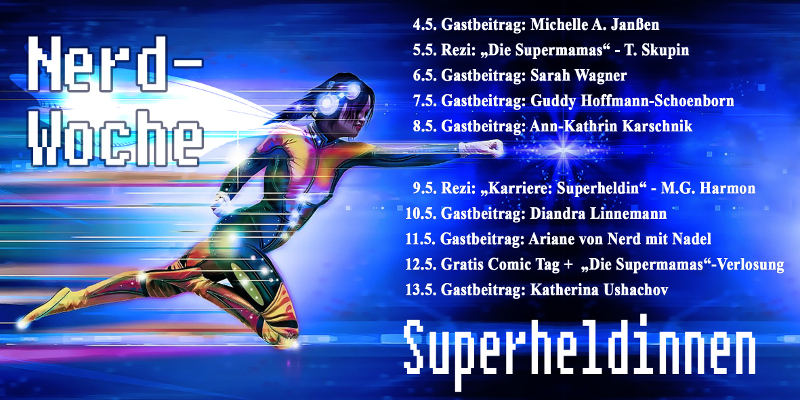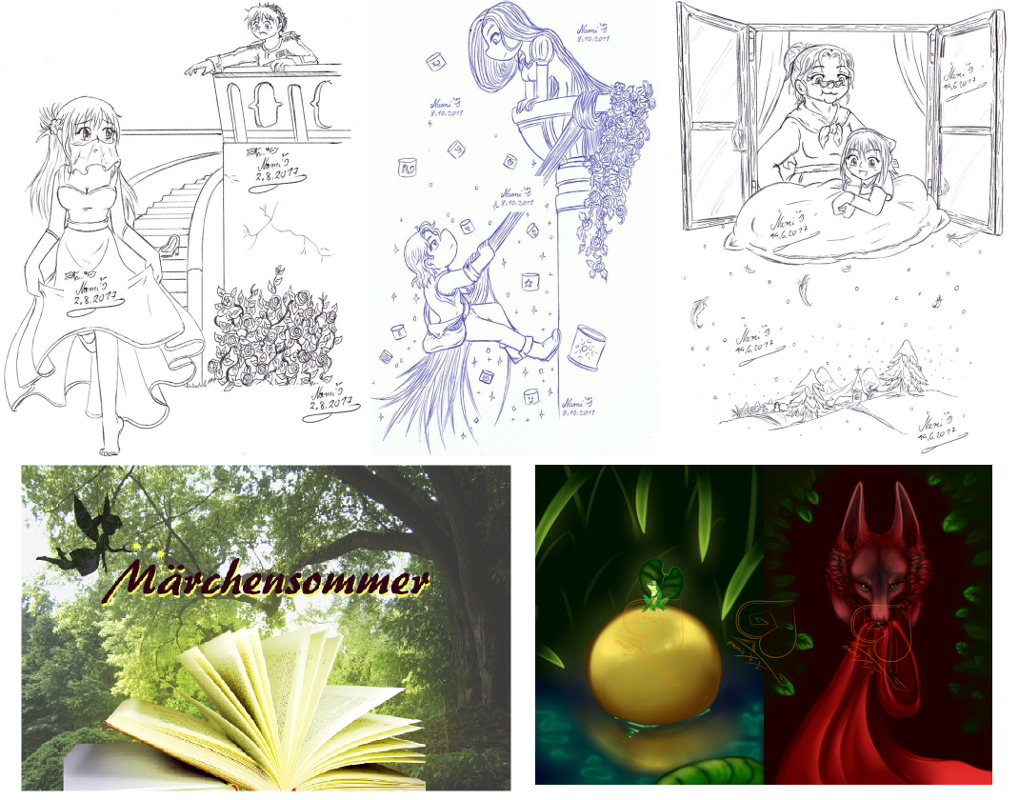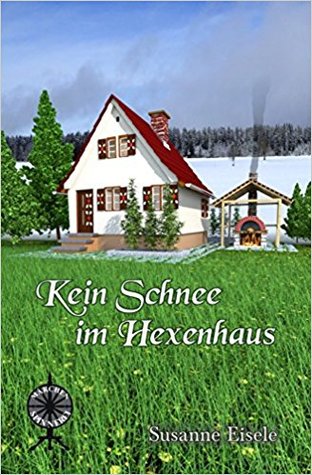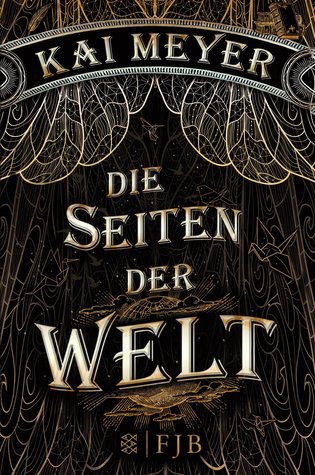As part of my nerd week on the topic of Superheroines you get my review for Karriere: Superheldin, dem ersten Band der Wearing the Cape Reihe von Marion B. Harmon.

What is it about?
The reading experience
Nachdem ich das Buch bei der Blogtour zur Veröffentlichung beim Feder&Schwert Verlag gewonnen und die entsprechenden Beiträge gelesen hatte, war ich neugierig, denn die Welt und das Buch klangen interessant. Ich bin mir relativ sicher, dass ich vorm Lesen allerdings Booknappings Rezension schon vorher gelesen habe, denn dadurch bin ich schon mit einem gemilderten Enthusiasmus an die Sache herangegangen.
Das Buch an sich hat auf die relativ vielen Seiten eine extrem kleine Schrift, man gewöhnt sich daran, aber es ist trotzdem anstrengend. Woran ich mich nicht gewöhnen konnte, war die Vorhersehbarkeit der Handlung in gewissen Aspekten … was mir das Lesen nicht unbedingt erleichtert hat … Und die wenigen Twists DIE es gab, waren dann doch etwas arg … abstrus …
Auch sehr schwierig war es zu folgen von welchen Charakteren nun die Rede war, denn die ich-Erzählerin Astra wechselte gerne mal zwischen Superheldenname und Realnamen oder sogar einem Spitznamen … und das gefühlt ständig …
The characters
Hauptsächlich waren es aber die Charaktere, die mir regelmäßig ein Augenrollen entlockten mit ihrer Klischeehaftigkeit.
Hope ist mal wieder der typische Hauptcharakter: Kaum hat sie ihre Kräfte, muss sie alles im Alleingang erledigen. Und von Geheimhaltung hält sie auch nicht viel, denn als alle ihr Raten niemandem etwas davon zu erzählen und sie damit anzulügen, tut sie das genaue Gegenteil.
Sie wird uns als die tragische Charakterin verkauft, die schreckliches mitgemacht hat und trotzdem ihren eigenen Weg weitergeht, aber ich finde hier wurde es übertrieben: Tote Schwester, Tote beste Freundin, schlimme Krankheit überstanden, in Katastrophe verwickelt wodurch sie erwacht ist und das alles hübsch verpackt in einem „elfenähnlichen“ doch gar nicht soo hübschen Körper …
Ihr männlicher Counterpart Atlas ist aber auch nicht viel besser … oder seine Kollegen von den Sentinels. Im Prinzip sind sie alle Abziehbilder bekannter Superhelden und Schurken. Ein paar interessantere Fähigkeiten und Hintergrundgeschichten sind mit bei, aber die sind von unbedeutenden Nebencharakteren.
Wobei ob nun Haupt- oder Nebencharakter, eine wirkliche Verbindung konnte ich zu keinem von ihnen aufbauen und meine eigene Emotionalität zum Ende hin galt der Szene an sich, nicht ihnen, mit Beerdigungszeremonien komm ich selten klar.
Auch Astras Entwicklung, wenn man sie denn als solche bezeichnen möchte, folgte dem bekannten Prinzip und ich wusste schon sehr schnell, dass eine andere Figur ihr Love Interest wird und habe nur noch drauf gewartet, dass sie es doch endlich mal tun. Als gut erzogenes katholisches Mädchen, natürlich erst nach der Hochzeit und er hat auch seine ganze Art für sie geändert und fand sie die stärkste Frau, die er je kennengelernt hat, will sie aber trotzdem auf immer beschützen und … ARG … diese Entwicklung hat mir im Prinzip die ganze Welt und das Buch kaputt gemacht … was wirklich schade ist … denn die war wirklich großartig.
Kurz gesagt: Wo ich die Supermamas für ihre Menschlichkeit loben konnte, wirkt hier leider alles sehr gekünstelt…
General Opinion
Wie eben schon gesagt, fand ich die Welt großartig. Superkräfte entstehen, die Welt wird neu geordnet, Konflikte, Teams, die nur als glorifizierte Rettungs- und Einsatzkräfte genutzt werden, Kräfte, die einer Aufgabe entsprechend entstehen und eingesetzt werden. Alles super. Alles sehr faszinierend, hätte ich gerne mehr von gelesen, aber die Charakterentwicklung schreckt mich einfach ab mir weitere Bände zu Gemüte zu führen.
Auch der letzte Twist erscheint mir unplausibel. Abgesehen davon, dass es ein mutiger Schritt ist diverse Haupt- und Hauptnebencharaktere zu töten, war die Erklärung – und der ganze Zeitreiseaspekt, der der Geschichte beschwang – irgendwie unglaubwürdige, irgendwie ZU viel des Guten … getrennte Plots, eine Auflösung im zweiten Teil, soetwas hätte der Story vermutlich geholfen etwas mehr zu atmen und die Charaktere hätten sich dann vielleicht auch besser entwickelt.
Wirklich schade, dass sie so enttäuschend waren, ich hatte mich wirklich auf das Buch gefreut …
Stuff I’d like to add
Als zusätzlichen Preis zum Buch habe ich eine Zeichnung gewonnen, aber davon werde ich an anderer Stelle vielleicht einmal mehr erzählen.

Morgen geht es dann weiter mit einem Gastbeitrag von Diandra Linnemann in dem sie mal ein bisschen über die Arbeitskleidung von Superheld*innen erzählt.
© For the cover belongs to its rightful owner.
* This post was translated using deepl.com and a few very funny mistranslations were involved.
____________________________
Lies auf Deutsch
As part of my nerdweek on superheroes, you’ll receive my review for Karriere: Superheldin, the first volume in Marion B. Harmon’s Wearing the Cape series.

What is it about?
The reading experience
After winning the book during the blog tour for the publication at Feder&Schwert Verlag and having read the corresponding articles, I was curious, because the world and the book sounded interesting. I’m relatively sure that I’ve read Booknapping’s review before reading it, because I’ve already approached the matter with a softened enthusiasm.
The book itself has an extremely small font on the relatively many pages, you get used to it, but it is still exhausting. What I couldn’t get used to was the predictability of the plot in certain aspects… which didn’t necessarily make reading it easier for me… And the few twists that existed were a quite … abstruse…
It was also very difficult to follow which characters were actually mentioned, because the narrator Astra liked to switch between superhero name and real name or even a nickname… and it felt like she was doing it all the time…
The characters
But it was mainly the characters who regularly enticed me to roll my eyes because of their clichédness.
Hope is once again the typical main character: As soon as she has her powers, she has to do everything on her own. And she doesn’t think much of secrecy either, because when everybody advises her not to tell anyone about it and to lie to them, she does the exact opposite.
She is sold to us as the tragic character who has gone through terrible things and still continues on her own path, but I think it was exaggerated here: Dead sister, dead best friend, survived a bad illness, got involved in a catastrophe which caused her to awaken and all this nicely packed in an „elf-like“ but not so pretty body…
But her male counterpart Atlas is not much better… or his colleagues from the Sentinels. Basically, they’re all decals of well-known superheroes and villains. A few interesting abilities and background stories are included, but they are from insignificant side characters.
I could not establish a real connection to any of them and my own emotionality towards the end was directed at the scene itself, not to them, I can rarely cope with funeral ceremonies.
Also Astra’s development, if you want to call it that, followed the well-known principle and I knew very quickly that another character would become her love interest and I was just waiting for them to finally do it. As a well brought up catholic girl, of course only after the wedding and he also changed his whole nature for her and found her the strongest woman he’s ever met, but still wants to protect her forever and… ARG… this development basically ruined the whole world and the book for me… which is a real pity… because it was really great.
In short: Where I could praise the Supermamas for their humanity, everything seems very artificial here…
General Opinion
As I said above, I really liked the world. Superpowers are emerging, the world is being reorganized, conflicts, teams that are only used as glorified rescue and emergency troops, powers that arise and are deployed according to a task. Everything’s great. Everything is very fascinating, I would have liked to have read more about it, but the character development just deterred me from reading more volumes.
Even the last twist seems implausible to me. Apart from the fact that it is a courageous step to kill several main and main supporting characters, the explanation – and the whole time travel aspect that influenced the story – was somehow unbelievable, somehow Too much overkill… separate plots, a resolution in the second part, that would probably have helped the story to breathe a little more and the characters might have developed better.
Too bad they were so disappointing, I was really looking forward to the book…
Stuff I’d like to add
As an additional prize to the book I won a drawing, but perhaps I will talk about it some more later.

Tomorrow we continue with a guest post by Diandra Linnemann in which she tells a little bit about the work clothes of superhero*ines.
© For the cover belongs to its rightful owner.
© For the cover belongs to its rightful owner.











